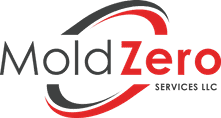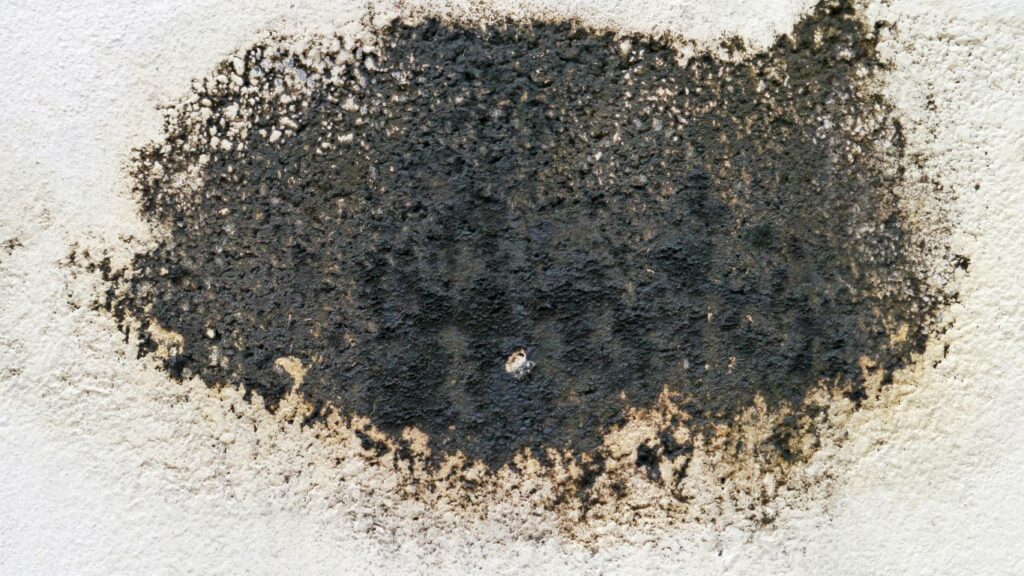Stachybotrys chartarum, or black mold, is a form of mold that may develop in homes, apartment buildings, and other commercial buildings that have moisture issues. If left untreated, it is known to have a dark green or black look and may result in a number of health problems and structural integrity issues.
Black Mold Identification
Black mold is often seen in damp environments including bathrooms, kitchens, and basements. Moreover, it may flourish on any cellulose-containing material, including drywall, paper, and wood. The following are a few typical indications of black mold development:
- Color: typically black or dark greenish-black, but may also appear as dark green or dark gray.
- Texture: slimy or sticky.
- Smell: musty or earthy odor.
- Location: commonly found in areas with high humidity and moisture, such as bathrooms, kitchens, basements, and crawl spaces.
- Growth pattern: grows in colonies, often appearing in circular or irregular patterns.
- Health risks: linked to respiratory issues, allergic reactions, and neurological problems.
It is highly recommended professional inspection if you think you could have black mold in your house or building to determine the extent of the damage and confirm the existence of black mold. Contact our LA mold removal experts today for a free inspection and quote.
Prevention
Controlling the moisture levels in your house or structure is the first approach to avoiding the formation and growth of black mold. The following are a few recommendations to avoid black mold:
- The following are a few recommendations to avoid black mold:
- Eliminate any leaks or water damage right away.
- Using a dehumidifier can help you keep humidity levels below 50%.
- Use exhaust fans to properly ventilate the bathrooms and kitchens.
- While constructing or upgrading your house or structure, choose mold-resistant materials.
- To avoid the formation of mold, regularly clean and examine your HVAC system.
Mold & Your Health
Numerous health problems can be brought on by mold, especially in people who already have allergies, asthma, or compromised immune systems. Mold exposure symptoms can include:
- Respiratory problems such as coughing, wheezing, and shortness of breath
- Allergic reactions, including nasal congestion, runny nose, and itchy eyes
- Headaches and fatigue
- Skin irritation or rashes
- Irritation of the eyes, nose, and throat
- Aggravation of asthma symptoms
- Fungal infections, especially in individuals with weakened immune systems
- Neurological problems, including memory loss and difficulty concentrating
- Lung infections, especially in individuals with chronic lung diseases
Black Mold vs “Normal” Mold
Not all molds have the same development characteristics. Stachybotrys chartarum, popularly known as black mold, is just one form of mold that may develop in residences and structures. Around 100,000 distinct mold species exist, each with its own color, texture, and health hazards.
“Normal” Mold Characteristics
Normal mold is a regular occurrence in houses and other structures. It may be green, yellow, white, or black, among other hues. It may develop on any damp surface, including floors, walls, and ceilings. Normal mold is often less hazardous than black mold, even though it may still lead to health concerns including allergic responses and respiratory difficulties.
Black Mold Characteristics
Black mold is recognizable by its dark green or black color and is often seen in wet environments including bathrooms, kitchens, and basements. Mycotoxins, which black mold is known to create, may seriously harm a person’s health, particularly if they already have a compromised immune system, respiratory disorders, or allergies. Mycotoxins spores, which black mold is known to release, may seriously harm a person’s health, particularly if individuals already have a compromised immune system, respiratory disorders, or allergies.
Any Mold If Bad Mold
It is essential to remember that any form of mold infestation has to be treated properly and very away. Get a professional examination if you suspect mold development in your house or building to determine the extent of the damage and any possible health issues.
You may take the required actions to stop mold development and safeguard your health and the health of people around you by being aware of the distinctions between black mold and common mold. To stop mold from growing, keep your house or building’s moisture levels under control, utilize mold-resistant items, and maintain regular HVAC system cleaning and inspections.
Black Mold FAQs
The following are a few of the questions we get most frequently from our customers across Los Angeles county. If you don’t see a question you have, contact us and we’ll be happy to answer it for you.
Can I eliminate black mold on my own?
It is not advised to eliminate black mold on your own since it might be hazardous and disperse the spores throughout your house or structure. To guarantee that the mold is removed and that it won’t return, it is crucial to work with a competent mold remediation firm.
How much does it cost to remove black mold?
The size of the affected area and the degree of damage determine the price of black mold eradication. To ascertain the cost of the removal, it is crucial to get a professional examination and quotation from a mold remediation firm.
Does black mold always pose a risk?
Not all black mold is hazardous, however, it may still be harmful to those who have compromised immune systems or respiratory issues. To determine the amount of damage and any possible health issues, it is crucial to have an expert examination.
Want to learn more about black mold? Check out these other blog posts to:
Free Inspection & Price Estimate
For a free inspection and estimate to guarantee the health and safety of your house or building from black mold, get in touch with Mold Zero Services LLC right now by calling (626) 671-8885 or by submitting a form here.

